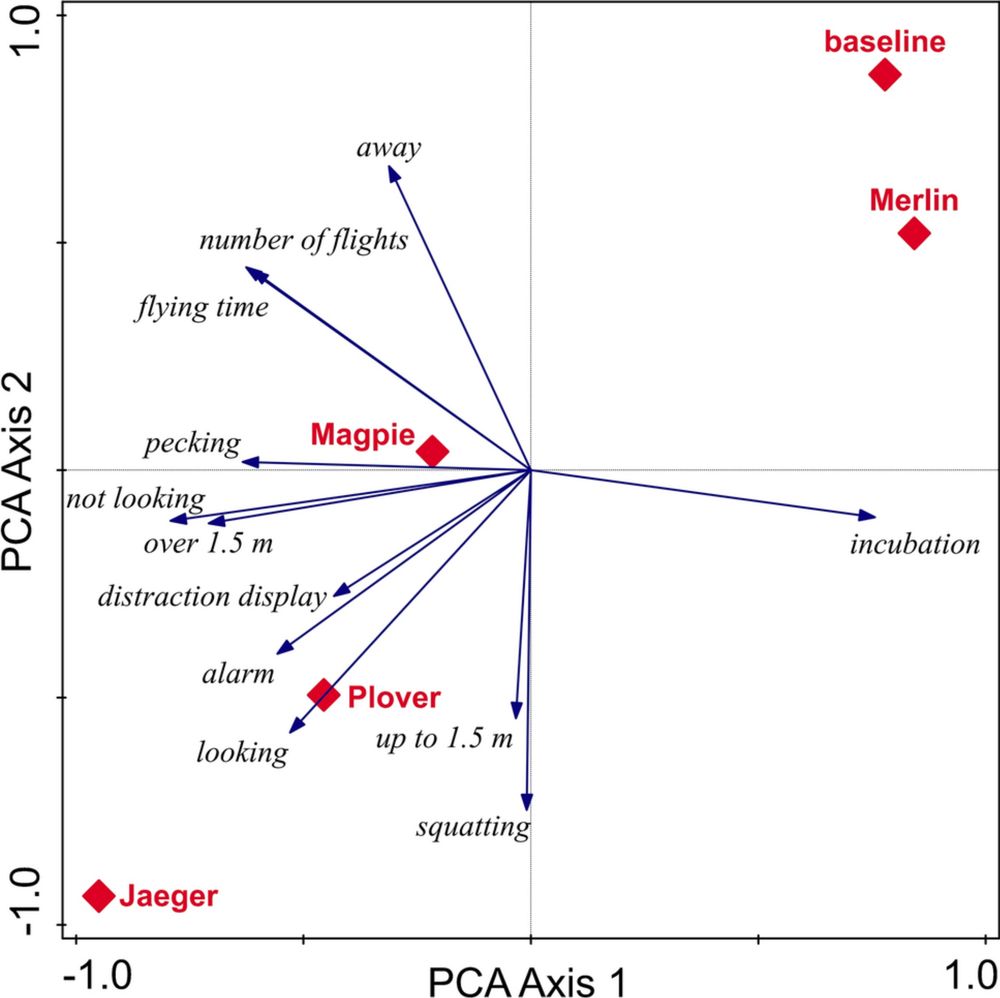
You can also find us on Instagram @DOrnitholGes and you can check out our website www.do-g.de
Haemosporidian infections in three sympatric Phylloscopus species: does host or environment determine parasite prevalence?
Open access
link.springer.com/article/10.1...

Haemosporidian infections in three sympatric Phylloscopus species: does host or environment determine parasite prevalence?
Open access
link.springer.com/article/10.1...
👉 Scan the QR code or visit our website (eou-fledglings.github.io/2026/registr...) to pre-register now!
Photo: Tom Koerner / USFWS (CC BY 2.0)

👉 Scan the QR code or visit our website (eou-fledglings.github.io/2026/registr...) to pre-register now!
Photo: Tom Koerner / USFWS (CC BY 2.0)
Burning the candle at both ends: two sympatric thrushes are equally detectable and sing at similar rates at dawn and dusk
Open access
link.springer.com/article/10.1...

Burning the candle at both ends: two sympatric thrushes are equally detectable and sing at similar rates at dawn and dusk
Open access
link.springer.com/article/10.1...
Photo: Gerlinde Kruse

Photo: Gerlinde Kruse
Cryptic diversity in the Amazonian Red-shouldered Tanager (Tachyphonus phoenicius) Swainson 1838 with a neotype designation and revalidation of Tachyphonus saucius Strickland 1844
link.springer.com/article/10.1...

Cryptic diversity in the Amazonian Red-shouldered Tanager (Tachyphonus phoenicius) Swainson 1838 with a neotype designation and revalidation of Tachyphonus saucius Strickland 1844
link.springer.com/article/10.1...
Spring-accelerated loop migration in the Woodchat Shrike Lanius senator
link.springer.com/article/10.1...

Spring-accelerated loop migration in the Woodchat Shrike Lanius senator
link.springer.com/article/10.1...
Behavioural responses of the Little Tern (Sternula albifrons) to different human disturbances
link.springer.com/article/10.1...

Behavioural responses of the Little Tern (Sternula albifrons) to different human disturbances
link.springer.com/article/10.1...
Assessing climate change impact on the distribution of the endemic White-naped Tit (Machlolophus nuchalis) using citizen science data
link.springer.com/article/10.1...

Assessing climate change impact on the distribution of the endemic White-naped Tit (Machlolophus nuchalis) using citizen science data
link.springer.com/article/10.1...


Common Ringed Plover (Charadrius hiaticula) is able to adjust the nest defense to perceived risk
link.springer.com/article/10.1...

Common Ringed Plover (Charadrius hiaticula) is able to adjust the nest defense to perceived risk
link.springer.com/article/10.1...
Bristle-thighed Curlews (Numenius tahitiensis) prefer to forage on rat-free islets at Rangiroa atoll, French Polynesia
link.springer.com/article/10.1...

Bristle-thighed Curlews (Numenius tahitiensis) prefer to forage on rat-free islets at Rangiroa atoll, French Polynesia
link.springer.com/article/10.1...
Photo: Christoph Unger

Photo: Christoph Unger
Movements throughout the full annual cycle of three migratory swift species breeding in the Levant
Open access
link.springer.com/article/10.1...

Movements throughout the full annual cycle of three migratory swift species breeding in the Levant
Open access
link.springer.com/article/10.1...
Stable isotope analysis reveals seasonal dietary patterns of Eleonora’s Falcons in the Galite Archipelago in Tunisia
link.springer.com/article/10.1...

Stable isotope analysis reveals seasonal dietary patterns of Eleonora’s Falcons in the Galite Archipelago in Tunisia
link.springer.com/article/10.1...
The species-specific rate of mass gain in juvenile waders during southward migration under ad libitum feeding conditions
Open access
link.springer.com/article/10.1...

The species-specific rate of mass gain in juvenile waders during southward migration under ad libitum feeding conditions
Open access
link.springer.com/article/10.1...
Gradual variation in vocalizations does not support multiple species within the White-shouldered Antshrike (Thamnophilus aethiops)
link.springer.com/article/10.1...

Gradual variation in vocalizations does not support multiple species within the White-shouldered Antshrike (Thamnophilus aethiops)
link.springer.com/article/10.1...
No evidence for assortative mating in the Atlantic Puffin
link.springer.com/article/10.1...

No evidence for assortative mating in the Atlantic Puffin
link.springer.com/article/10.1...
Different migration strategies under warming ocean anomalies in penguins: a study of spatial, oceanographic, and isotopic niche segregation
link.springer.com/article/10.1...

Different migration strategies under warming ocean anomalies in penguins: a study of spatial, oceanographic, and isotopic niche segregation
link.springer.com/article/10.1...
Seasonal dynamics of female bill colouration: an observation in captive House Sparrows (Passer domesticus)
Open access
link.springer.com/article/10.1...

Seasonal dynamics of female bill colouration: an observation in captive House Sparrows (Passer domesticus)
Open access
link.springer.com/article/10.1...
Citizen-science data resolves disputed subspecies limits in the lesser spotted woodpecker Dryobates minor across the Balkans and Minor Asia
link.springer.com/article/10.1...
Citizen-science data resolves disputed subspecies limits in the lesser spotted woodpecker Dryobates minor across the Balkans and Minor Asia
link.springer.com/article/10.1...
Three decades of breeding bird population changes in a pristine Danish forest: climate-driven shifts and biodiversity loss compared to national trends
Open access
link.springer.com/article/10.1...

Three decades of breeding bird population changes in a pristine Danish forest: climate-driven shifts and biodiversity loss compared to national trends
Open access
link.springer.com/article/10.1...
Assignment of wintering Barnacle Geese (Branta leucopsis) to breeding populations using genome-wide single-nucleotide polymorphisms
Open access
link.springer.com/article/10.1...

Assignment of wintering Barnacle Geese (Branta leucopsis) to breeding populations using genome-wide single-nucleotide polymorphisms
Open access
link.springer.com/article/10.1...
Using social media to document the persistence of the Peregrine Falcon and the Lanner Falcon across South Africa
Open access
link.springer.com/article/10.1...

Using social media to document the persistence of the Peregrine Falcon and the Lanner Falcon across South Africa
Open access
link.springer.com/article/10.1...

